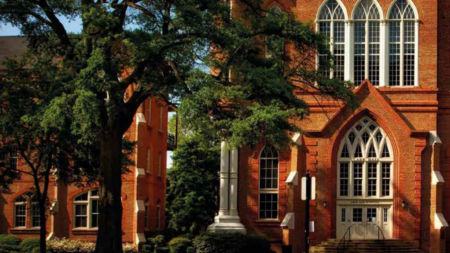A taxing time for independent schools

David Parker from estate agent Savills describes how changes to business rate relief will affect the independent school sector
The education sector is facing unprecedented challenges, from falling birth rates to reduced funding, which affect both state and public and independent (P&I) schools, so there’s already a ‘survival of the fittest’ feeling among some institutions.
The balance between state and private education is about to change under the new government. It has proposed to exclude the supply of education by P&I schools from the VAT definition of an ‘eligible body’, meaning that VAT will be due on school fees. This measure is expected to raise around £1.5 billion a year, although this may exclude mitigation through accounting practices. The additional revenue is said to be earmarked for investment into state education. The Non-Domestic Rating List shows 24,130 local authority schools or colleges in England and Wales, compared to around 2,500 public and independent (P&I) schools. The latter are estimated to educate around 7% of pupils.
The other major change is to remove the 80% relief applied to many P&I schools on their business rates. Business rates are a tax on the occupation of non-domestic property and each school is given a rateable value by the Valuation Office Agency (VOA) in England and Wales. The local council then applies a nationally set multiplier to arrive at the annual rates bill, but with an 80% discount on that bill for many P&I schools, sometimes topped up to 100% relief.
An independent school which is a registered charity may still continue to benefit from the 80% relief, but all others will see their bills increase to the full amount.
But what does this mean to the average P&I school? Rateable values average at £203,000, according to the Rating List for England & Wales. 41 of the 2,726 schools have rateable values above £1 million, but 1,824 schools have rateable values below £200,000. Once the annual multiplier has been applied to a rateable value, average annual bills are around £109,000, reduced to £21,800 with 80% relief. So the current relief is worth, on average, £87,200 for the current rate year.
With a total rateable value for P&I schools of around £555 million in England and Wales, if all such schools currently benefit from the 80% mandatory relief, the changes could save the Treasury up to £242 million, so significantly below the savings from removing the VAT exemption.
There’s a right to appeal against your rateable value, so is this recommended for all schools? The answer is a very cautious ‘maybe’, and certainly not before undertaking proper due diligence. P&I schools in city centres may have enough rental evidence among them to be able to set their rateable values based on rental levels. However, many others will be valued on the basis of the ‘contractor’s test’, which costs the replacement of a school with a modern equivalent, adjusting for age and obsolescence, and decapitalising that at a prescribed percentage set by government. In either method, it’s necessary to value what physically exists.
As many schools benefited from 80% rates relief, there was little appetite from the VOA, councils or even schools themselves to ensure that their survey data was accurate, so there’s a risk that any improvements made have not been reflected in their rateable values. If that were to be the case, a quick challenge of a rateable value could very easily lead to it going up, rather than down.
Going forwards, a newly introduced ‘duty to notify’ requires ratepayers to alert the VOA to property changes, with fines for non-compliance: this first step towards self-assessment could remove the threat of future unexpected increases, but it will be all the more important to factor in higher business rates in feasibility studies for future improvements.
What should a P&I school do to mitigate higher costs? It’s more vital than ever to undertake a strategic review of the use of physical assets, not only in the context of business rates, but also to identify areas of under-utilisation which could be streamlined, or areas of opportunity to raise revenue.
So while the pressure is on P&I schools to challenge rates, it should be done in a careful manner so as not to inadvertently increase them further.

David Parker
